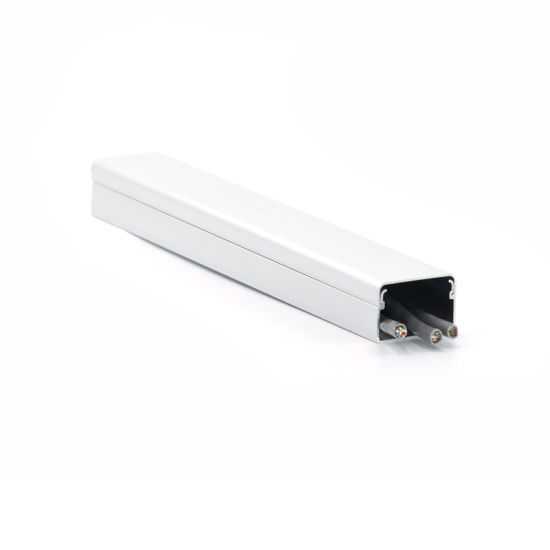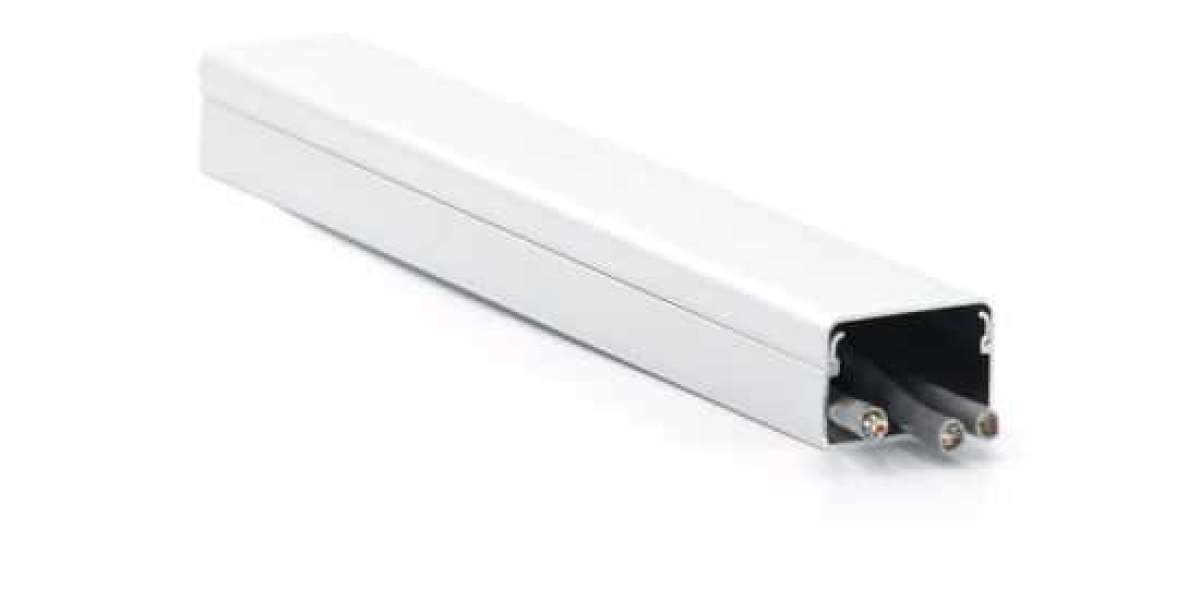In today's modern electrical installations, waterproof trunking is an essential component that provides an efficient solution to the challenge of ensuring the safety, reliability, and longevity of electrical systems in a variety of different environments. In this article, we will explore the world of waterproof trunking and shed light on its many benefits as well as the wide range of applications that it can serve. This cutting-edge solution plays an essential part in the process of protecting electrical circuits from the potentially hazardous effects of moisture, fluctuations in temperature, and mechanical impacts in a wide range of settings, from residential buildings to industrial facilities.
The term "waterproof trunking" refers to an enclosure system that is both durable and designed to shield electrical wiring and components from the effects of water intrusion.
PVC, polycarbonate, or stainless steel are some examples of the high-quality materials that are typically used in its construction. These materials, in conjunction with specialized seals and gaskets, help to produce a watertight barrier. As a result of the trunking's adaptability to a wide range of cable sizes and configurations, electrical installations can be designed to meet a variety of needs.
Moisture poses a significant risk to electrical systems because it has the ability to trigger electrical shocks, short circuits, and even fires. Fortunately, there is a way to defend against the effects of moisture and water damage.
The use of waterproof trunking is an essential component of any defensive strategy because it stops water from penetrating cable connections, switches, and outlets. This protection is of the utmost importance in locations that are susceptible to humidity, installations that are located outside, or environments that have a high moisture content, such as bathrooms, kitchens, swimming pools, and industrial facilities.
Increasing Compliance and Safety It is of the utmost importance to ensure that electrical systems are safe, and waterproof trunking plays a significant part in meeting the requirements set forth by regulatory standards and electrical codes.
The trunking contributes to the upkeep of a secure environment for the occupants by lessening the likelihood that electrical faults will be brought on by moisture. In addition to this, it helps ensure compliance with building regulations, such as the standards established by the International Electrotechnical Commission (IEC), which require the implementation of suitable preventative measures in environments that are either damp or wet.
Longevity and durability: Waterproof trunking is built to withstand harsh environmental conditions as well as mechanical stress, which enables it to provide electrical installations with protection that is in place for a significant amount of time.
The use of high-quality materials in its construction ensures that it is resistant to corrosion, as well as to the effects of chemical and UV radiation. Due to these characteristics, Waterproof trunking is suitable for use in both indoor and outdoor applications. Some examples of such applications include industrial plants, construction sites, commercial buildings, and residential complexes.

Flexibility and adaptability are essential qualities for electrical systems, as they frequently need to be updated or expanded over time.
The easy adaptability of waterproof trunking, which enables the seamless integration of new circuits or cables into existing installations, is one of the many advantages offered by this type of conduit. Because of its modular design, it enables quick installation and rearrangement, which helps reduce downtime during maintenance and repair work as well as changes in electrical requirements.
Easy Installation and Maintenance: Waterproof trunking is designed to be user-friendly, featuring snap-on mechanisms, pre-drilled mounting holes, and user-friendly accessories. Installation processes are simplified by having these features.
The ease with which it can be integrated is ensured by its standardized dimensions and compatibility with a variety of cable management systems. In addition, routine maintenance is simplified because there is easy access to the electrical components that are enclosed, which also makes it easier to inspect, troubleshoot, and repair any problems that may arise.
Multiple Industries Make Heavy Use of Waterproof Trunking Waterproof trunking is used extensively in a variety of industries.
In residential settings, it ensures the safety of electrical systems in locations that are prone to moisture, such as kitchens, bathrooms, and outdoor areas. Wiring in commercial environments such as parking garages, food processing facilities, and damp areas are shielded from harm by this material. Notably, it plays an essential part in industrial sectors with demanding conditions, such as factories, warehouses, production lines, and mining facilities, among other places.
When it comes to ensuring the safety of electrical systems, as well as their performance and longevity, Waterproof trunking is an essential solution. It plays a vital role in preventing electrical malfunctions and reducing risks in a variety of environments by effectively shielding electrical wiring and components from moisture, temperature variations, and physical damage. This helps prevent electrical malfunctions and reduces risks. Because of its sturdy construction, adaptability, and ease of installation, it is an excellent option for electrical installations and provides users with the same level of assurance in both residential and commercial settings. Incorporating waterproof trunking into the construction of resilient and dependable electrical systems that can thrive even in the face of challenging environmental conditions is a proactive step that should be taken.








